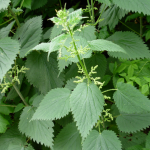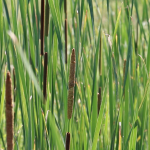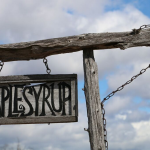What's Your Nature?
Become a Nature Up North explorer to share your encounters with wild things and wild places in New York's North Country. Post your wildlife sightings, landscape shots, photos from your outings, and even your organization's events!
Farmed And Foraged Posts
Wild Eats: Spring Foraging Fling
By Isabella de Buy Wenniger on
Blog: Farmed and ForagedOne of the best parts of spring is seeing the first shoots of green poking out of the ground, replacing the gray and brown of winter with bursts of color. The first plants to sprout not only lift our spirits and remind us of the summer warmth and color soon to come, but can add flavor and nutrients to spring meals. Known as spring tonics, commonly found early spring edible plants in the…
Wild Eats Episode 5: Wild S'mores

By India Harvey on
Blog: Farmed and ForagedNo campfire is complete without a few s’mores. S’mores hit the proverbial sweet spot of flavor and entertainment – enjoyed around a crackling campfire with family and friends, the challenge of roasting the perfect marshmallow can keep you occupied for hours. The classic marshmallow, graham cracker, and Hershey bar s’more has existed since at least 1927, when the recipe for “some mores” was…


Wild Eats Episode 4: Nettle Ravioli

By India Harvey on
Blog: Farmed and ForagedIn most cases it’s wise to avoid contact from anything that stings, yet nettles are a notable exception. Stinging nettles (Urtica dioica) are covered in fine hairs called trichomes, which inject histamines into your skin on contact, causing an unpleasant stinging sensation. Fortunately for us, cooking nettles destroys the trichomes, leaving us with a mild-flavored and nutritious leafy green…


Wild Eats Episode 3: Cattails

By India Harvey on
Blog: Farmed and ForagedWho needs mining gold when you can have swamp gold? What is swamp gold, you ask? Well, hold onto your hats ladies and gentlemen: you’re in for a treat! The North Country may not have a lot of golden ore, but its wetlands are filled with cattails whose pollen transforms local swamps into a virtual goldmine.
Cattails (Typha latifolia) are common wetland plants that are surprisingly useful to humans…
Wild Eats Episode 2: Juneberries

By India Harvey on
Blog: Farmed and ForagedAmelanchier canadensis, a small shrubby tree native to our region, goes by many names: serviceberry, shadberry, shadbush, and juneberry. But my personal favorite is saskatoon berry. What a wonderful name for a fruit. It perfectly captures the pizzazz of these tiny reddish purple spheres, which are most commonly known as juneberries. This designation highlights its harvesting season, since the…


Wild Eats Part One: Dandelion Burgers

By India Harvey on
Blog: Farmed and ForagedSome plants are so common that we forget to appreciate them. We see dandelions everywhere during the summer - their yellow flowers speckle the grass at local parks and poke out between the cracks of village sidewalks. Many people feel some hostility towards the plant, as dandelions stand in the way of a perfectly manicured lawn. Dandelions have a bad reputation, which is ironic because they were…
The Multipurpose Nettle

By Paul J. Hetzler on
Blog: Farmed and ForagedOne of my favorite plants is either highly versatile, or very confused. On the one hand, professional herbivores like rabbits and deer refuse to even touch it, but many people, myself included, will gladly eat it every day it is available. While contacting it is painful, it has been proven to relieve certain chronic pain. It is steeped in over a thousand years of folklore, at one point imbued…

Juneberry: An Early Bloomer

By Paul J. Hetzler on
Blog: Farmed and ForagedAnother regional attraction has just opened, and for the next few weeks you can see the show at innumerable open-air venues across the Northeast. The performance is free, although only matinees are available.
The new event is the blossoming of a widespread, though strangely little-known, early-flowering plant. It is either a small tree or a shrub, depending on who you ask, which makes me wonder…

Planning a Pollinator-Friendly Garden

By Samantha Haab on
Blog: Farmed and Foraged Bees are key pollinators for a variety of plant species that we rely on for food, medicine, livelihood, and aesthetics. They are obligate pollinators, so their diet of nectar and pollen makes their role in pollination a de facto part of their life. Farmers, gardeners, and all nature lovers alike, should aim to foster a diversity of pollinators in their farms or gardens. Especially in light…


Maple Weekend 2016

By Imman Merdan on
Blog: Farmed and ForagedMaple season is not considered to be one of the four seasons, but for those in the North Country, it is the sweetest. New York State Maple Weekend, which this year took place on March 19-20 and April 2-3 this year, is a celebration of the maple season and an opportunity for the public to see how maple syrup, candies, and other sweet treats are made. On April 2nd we caught up with St. Lawrence…










